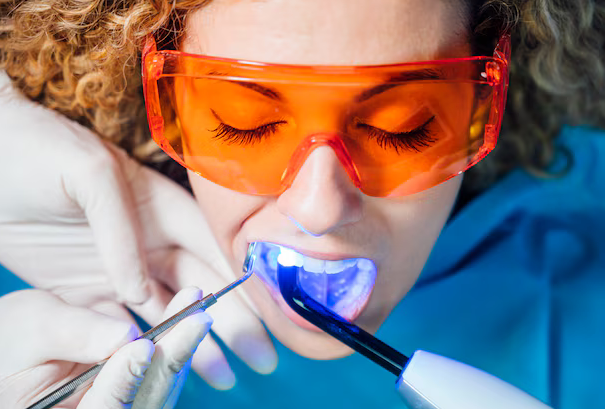Sexual health is full of unresolved myths and misconceptions. Today we bring this blog to clarify those; with special highlights on toilet seat infections, usage of double condoms, and the ‘pull out’ method! Read below.
An overview on sexually transmitted infections (STIs)
Also referred to as STDs (sexually transmitted diseases), these are infections that are transferred through sexual contact, including penetrative, oral and anal sex. Causative agents are bacteria, viruses, parasites, etc.
Early diagnosis and timely treatment is essential to manage their symptoms, hastening the recovery process. Visit a private doctor for this (especially if you are sexually active).
Prior scenario vs. current scenario
Looking back at a 2021 study conducted by the Centres for Disease Control and Prevention, 2019 was the year that saw the greatest heights of STI contraction, consecutively for the sixth time. More than 2.5 million cases of chlamydia, syphilis, and gonorrhoea infections were recorded in that year.
Unfortunately, cases of sexually transmitted infections are still on the rise in current times. According to recent WHO reports, around one million individuals contract STIs each day – that’s a really grave concern!
Despite such alarming rates, there is a lot of stigma attached to sexually transmitted infections. Most people find it embarrassing to express their private health concerns or ask help.
Such embarrassment and unwillingness to speak openly about sexual health can deteriorate the situation even more. Besides, it can breed misinformation about this important matter.
Busting some common myths about sexual health
Understanding sexual health helps people to make well-informed, wise and safe decisions. This also enhances overall health by providing true information about reproductive matters.
Below is a list of some common deep-rooted, false conceptions about sexual health.
Myth 1: When someone has ‘the pill,’ they will not contract STIs
The fact: Oral contraceptive methods cannot provide protection against contracting an STI. They only help prevent unplanned pregnancies. It is best to use a physical barrier method, such as, condoms to keep out potential STIs.
Same goes for device-based birth control methods. For example, patches, rings and intrauterine devices. They cannot help against contracting STIs.
Myth 2: The ‘withdrawal method’ prevents pregnancy
The fact: The so-called ‘pull out’ method (medically termed as coitus interruptus) is when the male partner takes out his penis from the female’s vagina, before ejaculation. This may reduce the chances of pregnancy; however, it is not a very reliable way to resort to.
Even if it is feasible, the heat of the moment may be too difficult for the man to perform the act. Plus, the pre-ejaculation phase releases sperms – known as pre-cum. It has the potential to cause pregnancy (upon accidental entry into the reproductive tract).
Thus, the best way to stay safe is using condoms from the very first moment of genital contact.
Myth 3: The ‘pull out’ method’ does not cause STIs
The fact: Even if you are using the withdrawal method, STIs can still be transmitted. For example, HIV, herpes, syphilis, gonorrhoea, chlamydia, etc.
Myth 4: Using two condoms enhances the protection
The fact: It is a common assumption for people that using two condoms will prevent the risk of genital fluid transmission. However, the reality is different. Let’s see.
When you use the double barrier method during sexual intercourse, the chances of condom breakage is more. This is because they rub against each other, generating a high amount of friction. Hence, wear a single condom – that will be the best.
Myth 5: You can get sexually transmitted infections from a toilet seat
The fact: Sitting on a toilet seat does not cause STIs. They are only spread through unprotected sexual intercourse, constituting vaginal, oral and anal pathways. Also, sharing unsterilised sex toys and private care products can contribute to STI development.
Let’s explain the mechanism behind. Viral and bacterial STIs do not sustain long outside the human body and need a suitable environment to grow and multiply. So, free all your worries and use toilet seats!
Myth 6: There is no prominent cure for STIs
The fact: This is false. Although they can be managed, not all types of STI can be healed. The WHO states that eight pathogens constitute the majority of STIs.
Out of the eight, four can be cured; such as, gonorrhoea, syphilis, chlamydia, and trichomoniasis. The first three are bacterial infections with the last one is parasitic.
The other four are viral: hepatitis B, herpes simplex virus (HSV), human immunodeficiency virus (HIV), and human papillomavirus (HPV). No permanent cure is available yet for these, however, it is important to point out that the body frequently clears HPV infections naturally.
Myth 7: You cannot acquire an STI unless you engage in penetrative sex
The fact: Engaging in penetrative sex is not the sole method by which an individual can acquire an STI. It has been found that besides penetrative sex; oral sex, genital contact, and sharing sex toys of others can contribute to STI transmission.
Well, there’s more. Acquiring an STI is also possible through exposure to infected blood, such as when sharing unsterilised needles (during blood transfusion).
Myth 8: You can transmit an STI only if you are showing symptoms
The fact: Many individuals transmit STIs to others without being aware, as stated by reputed sexual health experts in London. Most sexually transmitted infections remain symptomless for a considerably long period of time. This increases the transmission risks even more, leading to delayed diagnosis and treatment.
In fact, the World Health Organisation clarifies that the majority of STIs are asymptomatic in nature; only a handful of them exhibit mild symptoms that are not even identifiable at early stages.
The above thing is supported by several eminent doctors, emphasising the need to undergo regular testing and follow safe sex practices. These approaches are the best for prevention and management of STIs.
Conclusion
Hope now you are aware of the facts related to sexual health and STIs! For more professional guidance and diagnostic help, contact your local private sexual health clinic. This will keep you informed and STI-free in the upcoming times!




